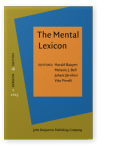Vol. 18:2 (2023) ► pp.300–337
A meta-analytic review of morphological priming in Semitic languages
Two types of discontinuous morphemes are thought to be the basic building blocks of words in Semitic languages: roots and templates. However, the role of these morphemes in lexical access and representation is debated. Priming experiments, where reaction times to target words are predicted to be faster when preceded by morphologically-related primes compared to unrelated control primes, provide conflicting evidence bearing on this debate. We used meta-analysis to synthesise the findings from 229 priming experiments on 4710 unique Semitic speakers. With Bayesian modelling of the aggregate effect sizes, we found credible root and template priming in both nouns and verbs in Arabic and Hebrew. Our results show that root priming effects can be distinguished from the effects of overlap in form and meaning. However, more experiments are needed to determine if template priming effects can be distinguished from overlap in form and morphosyntactic function.
Article outline
- 1.Introduction
- 1.1Priming of abstract morphemes in Semitic languages
- 1.2Is Semitic morphology represented in the mental lexicon?
- 2.Methods
- 2.1Paper identification and selection
- 2.2Data entry
- 2.2Derived variables
- 2.2.1Effect size
- 2.2.2Standard deviation
- 2.3Analyses
- 3.Results
- 3.1Evaluating bias in the morphological priming literature
- 3.1.1Evidence for selective submission or publication bias
- 3.1.2No evidence of p-hacking
- 3.2Overall effect size and methodological factors influencing the size of the priming effect
- 3.2.1Is there root and template priming?
- 3.2.2Methodological factors
- 3.2.2.1Root priming effects are smallest with visual primes, do not vary with masking of the visual prime, and are minimally affected by SOA
- 3.2.2.2Template priming is affected by SOA but not prime and target modality
- 3.2.2.3No difference in root or template priming effects found with lexical decision or naming tasks
- 3.3Substantive effects on root priming
- 3.3.1Root priming does not differ across word class or language
- 3.3.2Root priming is independent of both semantic and form overlap
- 3.4Substantive effects on template priming
- 3.4.1Verbal templates prime more than nominal templates in both Arabic and Hebrew
- 3.4.2Mixed evidence that template priming is independent of morphosyntactic overlap
- 3.4.3Template priming is independent of form overlap
- 3.1Evaluating bias in the morphological priming literature
- 4.General discussion
- 5.Conclusion
- Acknowledgements
-
References
